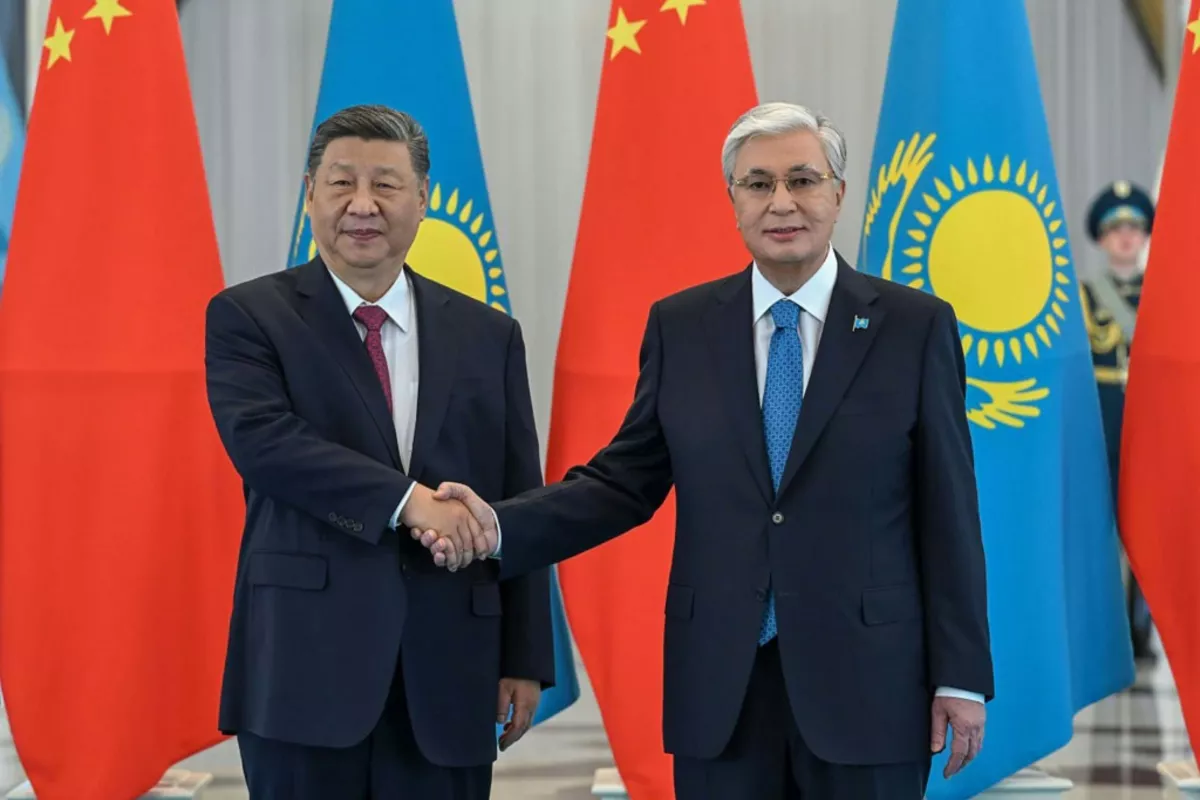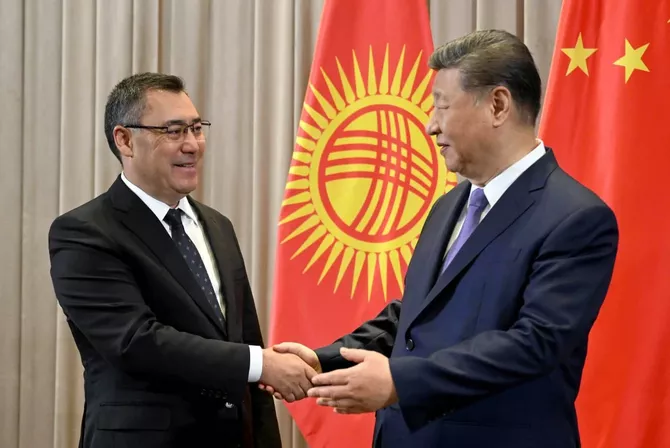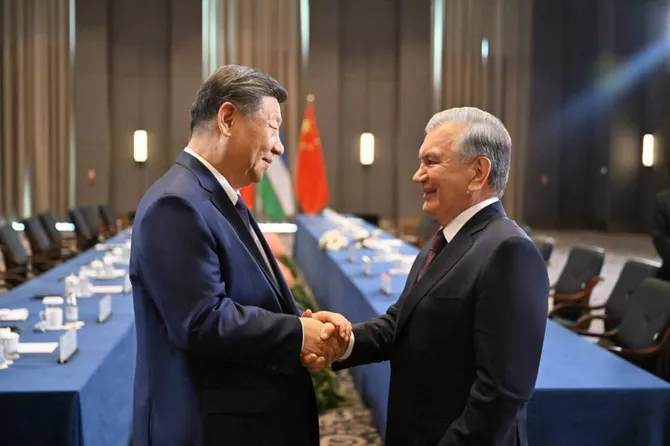
Chinese President Xi Jinping met with Central Asian leaders at a summit in Kazakhstan on June 17, marking his second visit to the region in less than a year, as China intensifies its efforts to expand influence in Central Asia amid growing competition with Russia.
The summit in Astana brings together Mr Xi - who arrived in the Kazakh capital on June 16 - and the leaders of Kazakhstan, Kyrgyzstan, Uzbekistan, Tajikistan and Turkmenistan, The Caspian Post reports citing foreign media.
Under Russia’s orbit until the fall of the Soviet Union in 1991, the five countries of Central Asia have courted interest from major powers including China and the United States since becoming independent.
The region is rich in natural resources and strategically located at the crossroads of Europe and Asia.
In a meeting with Kyrgyz President Sadyr Japarov on June 17, Mr Xi called for the two countries to “scale up trade and investment, and expand cooperation in emerging sectors”, Chinese state news agency Xinhua reported.

Photo credit: Kabar
The two sides should “advance high-quality construction of the China-Kyrgyzstan-Uzbekistan railway and foster new drivers of growth in clean energy, green minerals and artificial intelligence”, Mr Xi reportedly said.
In talks with Tajik President Emomali Rahmon, Mr Xi said Beijing “firmly supports Tajikistan in safeguarding its national independence, sovereignty and security”, according to Xinhua.
The Chinese leader also held talks with Uzbek President Shavkat Mirziyoyev and Turkmen President Serdar Berdymukhamedov, according to Beijing’s state media.

Photo: uza.uz
While Central Asian leaders continue to view Russia as a strategic partner, ties with Moscow have loosened since the war in Ukraine.
The five nations are taking advantage of the growing interest in their region and coordinating their foreign policies.
They regularly hold summits with China and Russia to present the region as a unified bloc and attract investment.
High-level “5+1” format talks have also been organised with the European Union, the US, Turkey and other Western countries.
“The countries of the region are balancing between different centres of power, wanting to protect themselves from excessive dependence on one partner,” Kyrgyz political scientist Nargiza Muratalieva told AFP.
Biggest trade partner
Russia says China’s growing influence in the region does not pose a threat.
“There is no reason for such fears. China is our privileged strategic partner, and the countries of Central Asia, naturally, are our natural historical partners,” Kremlin spokesman Dmitry Peskov told reporters on June 16.
But China has now established itself as Central Asia’s leading trading partner, far outstripping the EU and Russia.
Central Asia is also an important target for China in its Belt and Road initiative - which uses huge infrastructure investments as a political and diplomatic lever.
Construction of the Uzbekistan-Kyrgyzstan-China railway and the China-Tajikistan highway, which runs through the Pamir Mountains to Afghanistan, are among the planned investments.
New border crossings and “dry ports” have already been built to process trade, such as Khorgos in Kazakhstan, one of the largest logistics hubs in the world.
“Neither Russia nor Western institutions are capable of allocating financial resources for infrastructure so quickly and on such a large scale, sometimes bypassing transparent procedures,” said Dr Muratalieva.
Kazakhstan said last week that Russia would lead the construction of its first nuclear power plant but that it wanted China to build the second.
“Central Asia is rich in natural resources such as oil, gas, uranium, gold and other minerals that the rapidly developing Chinese economy needs,” Dr Muratalieva said.
“Ensuring uninterrupted supplies of these resources, bypassing unstable sea routes, is an important goal of Beijing,” the analyst added.
Human rights
China also positions itself as a supporter of the predominantly authoritarian Central Asian leaderships.
At the last Central Asia-China summit, Mr Xi called for “resisting external interference” that might provoke “colour revolutions” that could overthrow the current leaders in the region.
“Beijing sees the stability of the Central Asian states as a guarantee of the security of its western borders,” Dr Muratalieva said.
Central Asia borders China’s north-western Xinjiang region, where Beijing is accused of having detained more than a million Uighurs and other Muslims, part of a campaign the UN has said could constitute “crimes against humanity”.
Share on social media